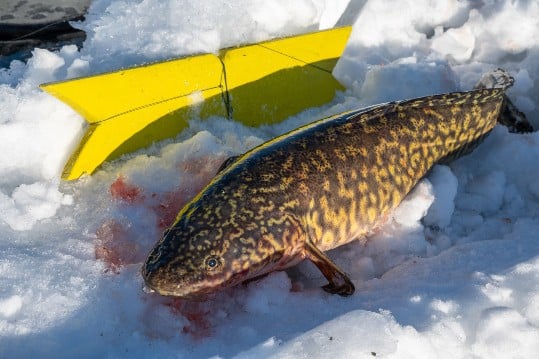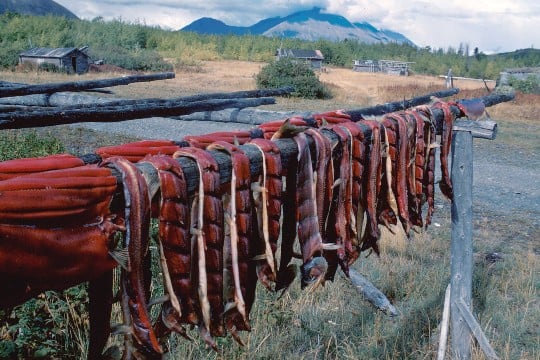It’s hard water fishing time again and like every other year, we will hear news of trucks, snow machines and people going through the ice. Those events can be very dangerous and costly, even if your auto insurance does cover you.
Thin ice is usually the problem, especially early in the season when it never gets really cold enough for ice to become thick enough to hold various weights. We all understand that ice must be solid and thicker to support the weight of a truck compared to a snow machine compared to a person on foot. A group of people close together on foot can easily weigh 1,000 pounds (five to six people with gear) and well over that amount with a bigger group.
I don’t take my truck on the ice, but if I did, I would travel in the tracks of others. The same with walking, pulling your sleigh filled with cooler and other gear. I would walk on a path made by others, if available. These suggestions don’t come with a guarantee of safety, but if someone else has gone this way, it was safe for them.
In the same weather circumstances, river ice is generally less safe than lake ice. Yukon rivers all have currents, bends, gravel bars, log jams and usually decreasing water levels over the winter. All these are factors in ice conditions. Open water at the coldest temperatures is very common on our rivers.
Overflow on rivers and (especially) lakes is very common and completely invisible if you are the first person onto it after the last snow. This occurs when water levels rise, or ice settles under snow weight and water seeps up and covers the ice surface. Snowfall settles nicely on top of the slushy water and makes it invisible. If you are walking, you will know within a few steps that you are into overflow and you can turn around and escape as it can be knee to thigh deep, certainly deeper than your boots are tall.
Powerful snow machines can usually pull themselves out of overflow if you realize it is happening and are going fast to start with. You must get turned around and back to where you entered the overflow area. You are in big trouble if you stop in an area where you did not realize there was overflow. As you slow down, your machine just sinks into the slushy water until it reaches the ice surface beneath.
Ice picks worn around your neck are a good idea because if you fall through ice in deep water it is close to impossible to get back up onto the surrounding ice. They are available at Canadian Tire in Whitehorse, or are easy to make out of dowel or pieces of wooden shovel or broom handle. You must have them around your neck (best place) or in a reachable pocket if you go through the ice.
You could carry 50 feet of coiled nylon rope with a foam float on the end for years and never use it, but just one situation where someone has gone through the ice will prove its worth.




